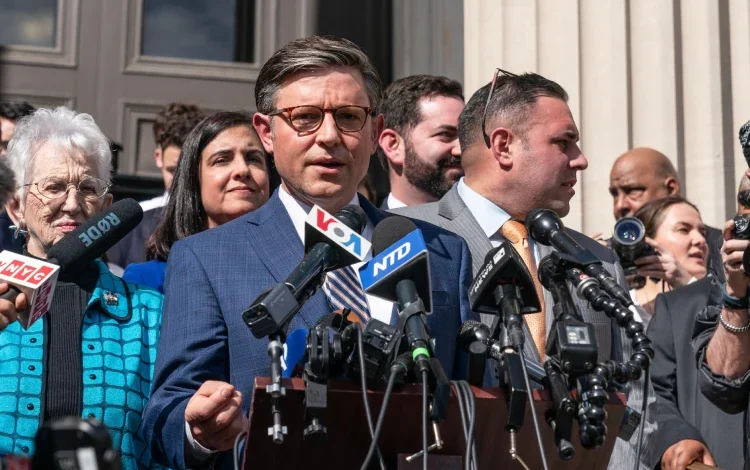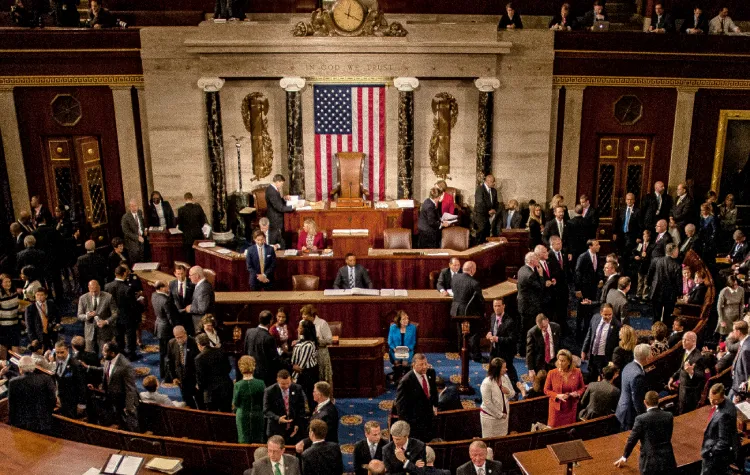
Trump’s “Big Beautiful Bill” Nears Final Vote After Narrow Senate Passage
Sweeping Legislation That Combines Tax Cuts and Public Program Rollbacks Could Reach the President’s Desk by July 4
After weeks of intense debate and close calls, Donald Trump’s One Big Beautiful Bill has cleared the U.S. Senate and is now headed to the House of Representatives for a final vote. The bill, which blends extended tax cuts with major reductions to public programs, has become a centerpiece of Trump’s legislative strategy in his second term.
Vice President J.D. Vance cast the tie-breaking vote in the Senate on July 1 after two Republican senators, Thom Tillis and Rand Paul, broke with the party and opposed the measure. The Senate vote followed procedural challenges, including the removal of key Medicaid-related cuts that the Senate parliamentarian ruled out of order under reconciliation rules.
The final House vote is expected to take place before the Fourth of July, with House Speaker Mike Johnson pushing for swift passage. If approved, the bill would head directly to President Trump for his signature.
Key Provisions and Political Stakes

The One Big Beautiful Bill, known informally as OBBBA, extends tax cuts first enacted during Trump’s previous term and adds new reductions for corporations and high-income individuals. At the same time, it makes sharp cuts to federal programs such as Medicaid, nutrition assistance, and climate-related subsidies.
Supporters argue that the bill is necessary to maintain economic growth and control federal spending. Trump has described it as a crucial tool for “protecting American jobs and families.” However, critics warn that it would add an estimated $2.4 trillion to the federal deficit over the next ten years while leaving millions uninsured.
Policy experts have not reached a consensus. While some argue the tax changes could help businesses plan ahead and invest with more confidence, others warn that reducing support for healthcare and nutrition may deepen economic hardship for low-income households and put pressure on public services.
A Divided Congress and Public Backlash
The bill first passed the House on May 22 by a one-vote margin, with 215 members in favor, 214 opposed, and one abstaining. That version has since been amended by the Senate, requiring a second vote by the House before it can become law.
Public reaction has been mixed. At a rally last week, Trump warned that failing to pass the bill could result in what he called “the biggest tax increase in history.” On social media, criticism has grown, with some calling the bill a “war on the American public.” Elon Musk also weighed in, calling the Senate version “insane and destructive.”
On Wednesday evening, Representative Hakeem Jeffries, along with fellow House Democrats, extended floor speeches for several hours by invoking a rule that allows party leaders to speak without strict time limits. The move was intended to slow down the voting process and voice objections to the bill.
Next Steps and Possible Outcome
House Speaker Mike Johnson remains optimistic that the revised legislation will secure enough votes in the chamber, even as debate continues. Lawmakers are working toward holding the vote before the July 4 holiday, positioning it as a potential achievement for the administration.
A successful vote would deliver a major policy win for President Trump during his second term. On the other hand, failure to pass the bill could weaken Republican momentum ahead of next year’s congressional races.
The outcome will likely influence debates around healthcare, tax policy, and the role of government assistance for years to come.




